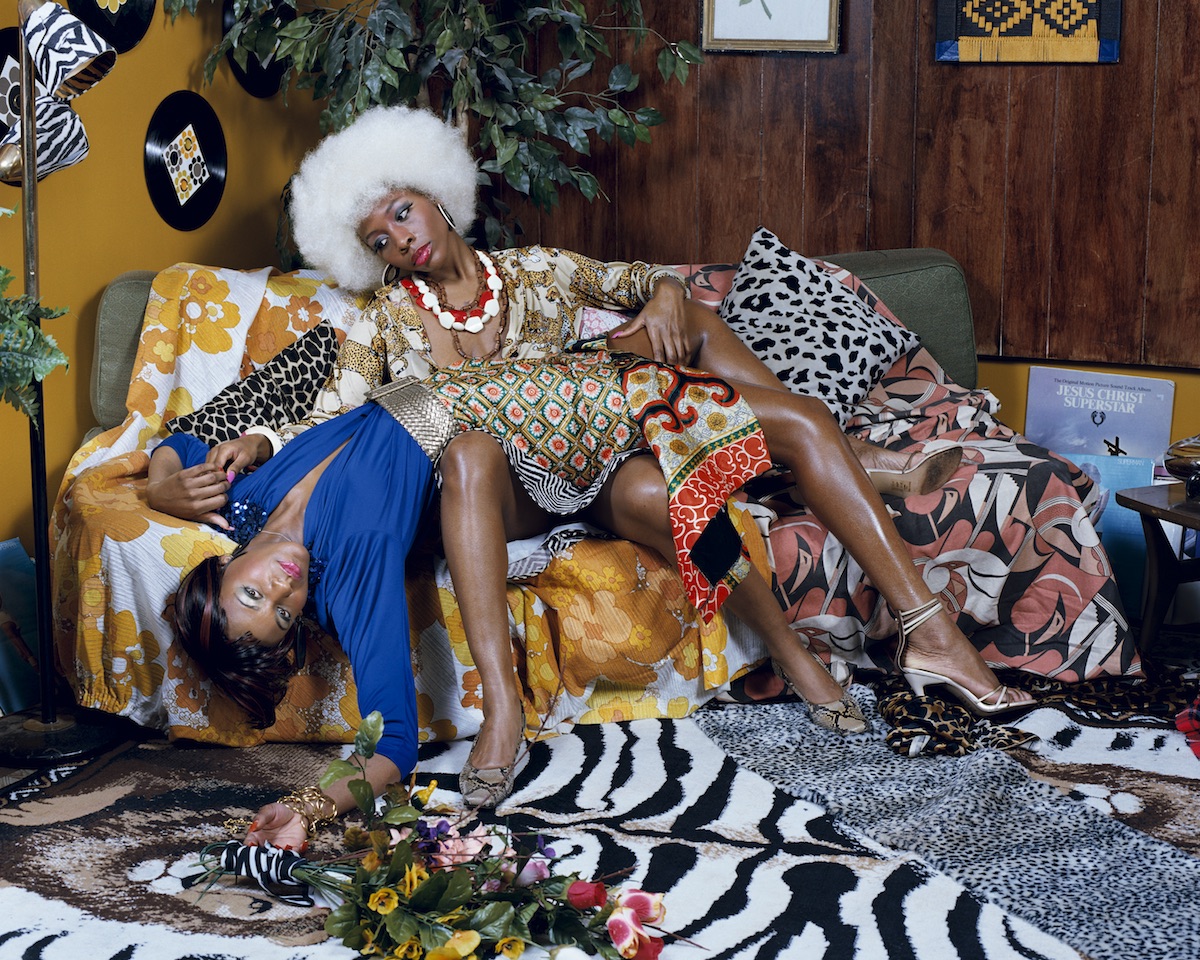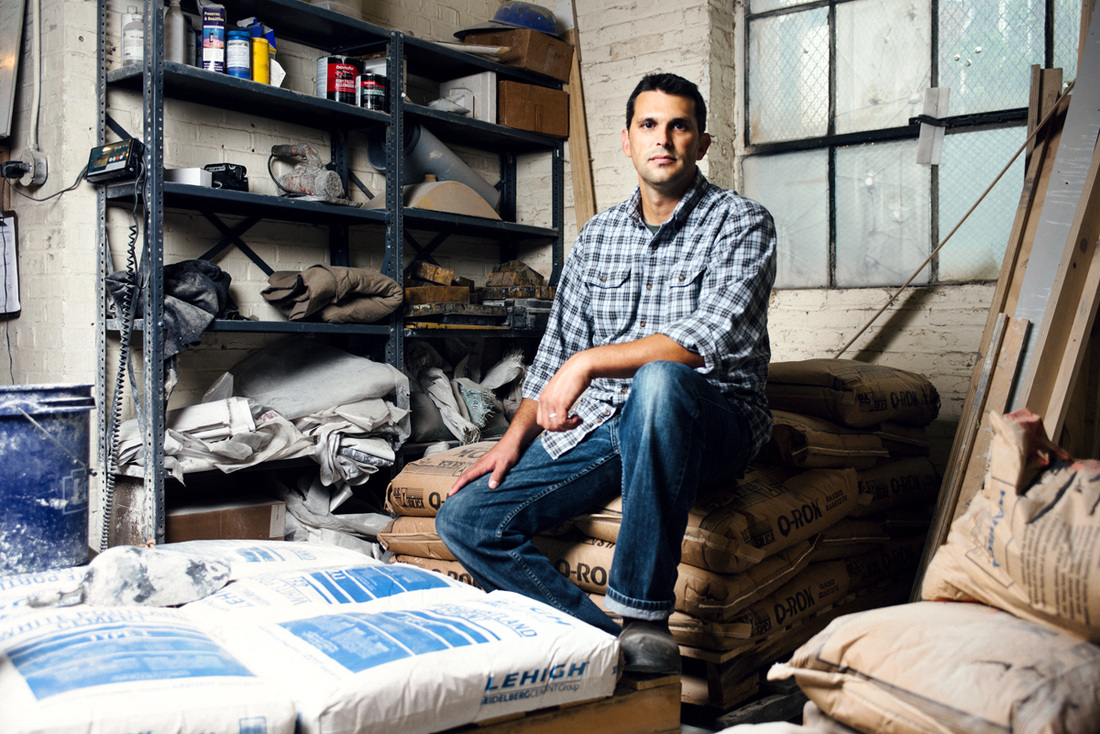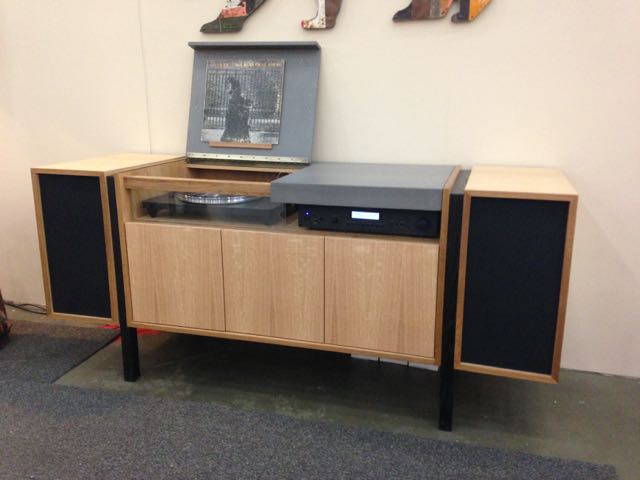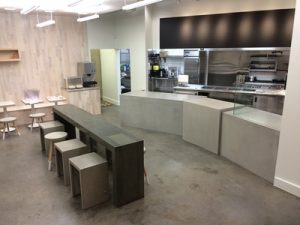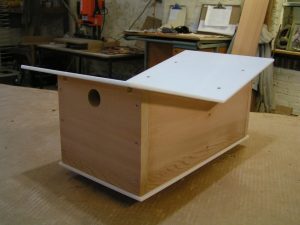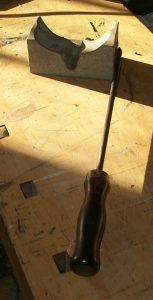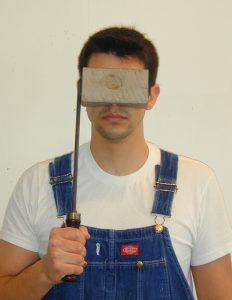Mark Melonas on Contemporary Craft, Teaching, and Owning a Creative Business in Baltimore by Rebecca Juliette
This weekend, Baltimore hosts the annual American Craft Council Show and, although it’s an international venue for all types of craft, our local maker scene is well represented. Rebecca Juliette caught up with Baltimore craftsman Mark Melonas and owner of LUKE WORKS to ask him about his work and his involvement in the upcoming ACC Show.
Melonas has been making things his whole life, including skateboard ramps, GI Joe Forts, movies, skits, and music. He started professionally at age 14 as a helper to a local builder, as a laborer at a small farm, and then in high school as a punch-out man for a general contractor.
Melonas studied Architecture, Art, and Design at UMCP and received a BA in Studio Arts in 1998 with a focus on sculpture and 3-D design. He traveled to New Bedford, Massachusetts and received a MFA in Artisanry from the Furniture Department of the University of Massachusetts Dartmouth. Before and after his studies in Massachusetts, he apprenticed with a furniture maker John Calvin in Columbia, MD.
Melonas is a designer, moldmaker, furnituremaker, concrete artisan and self described “curious guy.” He works in all materials in order to build whatever is required. In 2001, he created LUKE WORKS, a design and build firm that creates furniture, precision casework, and concrete elements. Over the years he’s taught sculpture, drawing and design at UMass Dartmouth and CCBC and instructed the senior sculpture class at the Baltimore School for the Arts. He has also led visits to his studio with university and high school students and design firms. Melonas lives with his family in Baltimore City.
(Feature photo by Jonathan Hanson)
On your website there is a photo of your grandfather’s garden and you mention building your first piece of furniture in his shop. What was it? Can you talk about his influence on you and your career?
I can remember the first two things I made at his shop. One was a small table using reclaimed bicycle forks as the legs and wood from his pile as the top. The second was more ambitious, an angular orange-stained plywood chair. I was influenced mostly by his work ethic and his willingness to apply lessons learned from making other things to the challenge of the day. He and my grandmother were skilled craftspersons and would make gifts for Christmas that are family heirlooms.
You’ve had a long history as a maker in many different mediums. How did you become interested in working with concrete? What are the rewards and challenges of working with concrete?
I’ve always enjoyed mold making and casting. The challenge of thinking backwards and figuring out a mold is a rewarding process. Using concrete as a permanent relic of that process is satisfying in what the material does and its endurance. There are many challenges, I’ve learned a lot about what not to do. Largely, when I started out there was not a large body of knowledge or access to materials for making smaller things in concrete. There has been a lot of trial and error but now I have much more knowledge and the materials are easier to get a hold of.
How did LUKE WORKS come about? What led you to that particular path after such a varied education?
After finishing graduate school and moving back to Maryland in 2000 I wanted to design and make a variety of things. I didn’t think I could work at another firm and be able to do any of what I wanted. At first it included graphic design and even metal railings! So, in 2001 I started putting the word out to a few architects and builders and it slowly grew.
It sounds like you have built a creative and practical career for yourself. What are the demand vs. joys of being a full time maker?
The joys of making things are usually found in the very small successes of a nice conversation or a moment of satisfaction in the process of making a project. The challenges are usually related to not being satisfied with yourself or the challenge as well as the mundane demands of running a business.
Do you have a studio practice outside of LUKE WORKS? If so, how does your “personal” work differ from your “professional” work? And how do you maintain a balance?
I am trying to create more of a studio practice or “other” practice outside of my work at LUKE WORKS. Creating and running this business has been a focus for over 15 years! Over the last two years I’ve scaled back the studio and amount of work at LW which has allowed me more time to think and to collaborate and work on other pursuits. This includes creating the Here50 project last year (here50.com) as well as making small concrete objects that are fun for me to realize. This also includes taking time to teach – last summer I taught the first major concrete specific class at the Penland School of Crafts. The balance is hard but understanding that things take time and having the patience to let things naturally evolve has helped.
I also devote time to coaching youth sports – my kids play baseball and basketball – that is a really nice change of pace and allows me to give back some of the lessons I learned from my granddad, my dad and my coaches growing up.
How did you become involved with the American Craft Council Show and the “Let’s Make” Area? What keeps you coming back?
Three years ago we were asking to design the tasting room for The Balvenie. It was a lot of work – we designed and built 5 large pieces of furniture and then curated work from around the show into the booth – but very enjoyable. Following that, for the last two years they have invited us for “Let’s Make.” I love the show and talking with the other artists from Baltimore and around the country. Showing and teaching the visitors about things made in concrete is a lot of fun. Additionally Friday is the day that students come to the show and they are pretty funny.
What can participants expect to take away from a “Let’s Make” session with you?
Most often they are surprised. “That’s concrete?!?” We will actually make things so, if they hang around for an hour or so, they can take something home.
Is there anyone who you are looking forward to seeing at the show? Any artisans that attendees should not miss or highlights of the weekend for you?
Generally, I just like the feel of the show. And its always nice to see my Baltimore friends like Sebastian and The Baltimore Jewelry Center – we never get to hang out enough. I always discover something new… and there’s this one guy from the DC area that makes crazy puppets and figures – I love his stuff.
You’ve been an instructor at UMass, CCBC, and Baltimore School for the Arts. How did you counsel students that expressed an interest in becoming craftspersons or makers?
Go to school early if you can and don’t go into debt. Focus on what excites you.
What role does the city of Baltimore play in your life and livelihood?
I really enjoy the industrial and architectural history. My dad and my in-laws grew up here and I love their stories. And, of course, the creative and friendly attitude of my artist/designer friends and neighbors.
Bonus Question: What is your favorite piece in any medium and why?
One of mine? Oh god. It was called Masque… from a long long time ago. Cast concrete, turned rosewood handle, brass ferrule, and steel.
*************
Author Rebecca Juliette has the heart of an artist and the brain of a librarian. If you invite her to your party, know that by the end of night your record collection will be alphabetized by category.
You can find Mark in the “Let’s Make Inspiration Station” on Friday, February 24th or learn more about him online.
American Craft Show Baltimore 2017
February 24: 10 a.m. – 8 p.m.
February 25: 10 a.m. – 6 p.m.
February 26: 11 a.m. – 5 p.m.
@ The Baltimore Convention Center : 1 West Pratt Street, 21201
